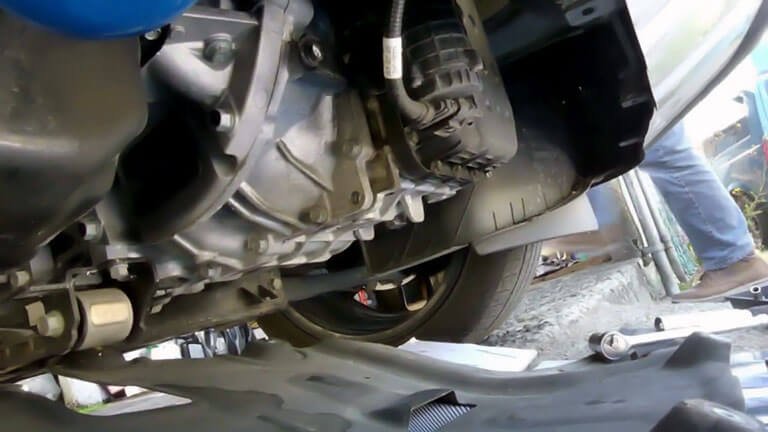Kia CVT Transmission Problems: Quick Fixes & Tips
Kia CVT transmission problems often include erratic shifting and unexpected delays. These issues can lead to reduced performance and potential safety risks.
Kia has gained popularity for its stylish design and affordability, but some drivers encounter issues with its Continuously Variable Transmission (CVT). Many report symptoms like shuddering, slipping, and hesitating during acceleration. These problems can stem from various factors, including software glitches and fluid quality.
Understanding these challenges is crucial for Kia owners, as timely intervention can prevent more extensive damage. Regular maintenance and prompt diagnosis are key to ensuring a smooth driving experience. Addressing CVT issues early not only enhances vehicle performance but also contributes to overall safety on the road. Explore the common problems and solutions to keep your Kia running smoothly.
Introduction To Kia Cvt Transmission

Kia uses Continuously Variable Transmission (CVT) in many models. This technology offers smooth driving and better fuel efficiency. Understanding how CVT works is essential for Kia owners.
The Shift To Continuously Variable Transmission
Many car manufacturers switched to CVT for several reasons:
- Improved fuel efficiency
- Smoother acceleration
- Less mechanical complexity
Kia embraced this technology in various models. The CVT allows endless gear ratios. This feature helps the engine run efficiently in different conditions.
Benefits And Challenges
CVT offers notable benefits and some challenges:
| Benefits | Challenges |
|---|---|
| Better fuel economy | Potential reliability issues |
| Smooth driving experience | Higher repair costs |
| Fewer moving parts | Less responsive feel |
While CVT provides advantages, some Kia owners report problems. Understanding these issues is crucial for proper maintenance. Regular check-ups can help prevent significant troubles.
Common Cvt Transmission Problems In Kia Models
Kia vehicles equipped with Continuously Variable Transmissions (CVTs) can face various issues. Understanding these common problems helps in timely diagnosis and repair. Here are some frequent CVT transmission problems found in Kia models.
Transmission Slipping
Transmission slipping occurs when the engine revs but the vehicle does not accelerate properly. This can happen for several reasons:
- Worn out CVT belt
- Faulty transmission fluid
- Software issues in the transmission control module
Drivers may feel a sudden loss of power during acceleration. Regular maintenance can help prevent slipping issues.
Delayed Acceleration
Delayed acceleration is another common issue. This problem makes it difficult to respond quickly when pressing the gas pedal. Possible causes include:
- Low transmission fluid levels
- Clogged transmission filter
- Worn internal components
This delay can be frustrating and unsafe. Regular fluid checks and timely servicing can help solve this issue.
Fluid Leaks
Fluid leaks can occur in CVT systems. Low fluid levels can lead to serious damage. Here are common signs of leaks:
- Puddles of fluid under the vehicle
- Burning smell from the engine
- Warning lights on the dashboard
Addressing leaks quickly is crucial. Ignoring them can result in costly repairs.
Overheating Issues
Overheating issues may arise due to various factors. High temperatures can cause significant damage to the CVT. Common causes include:
- Low fluid levels
- Faulty cooling system
- Driving in harsh conditions
Signs of overheating include:
- Burning smell
- Unusual noises
- Warning lights on the dashboard
Regular inspections can help prevent overheating problems.
Quick Fixes For Immediate Relief
Experiencing problems with your Kia’s CVT transmission can be frustrating. Fortunately, there are some quick fixes that may help. These methods can provide immediate relief and get your vehicle back on track.
Checking And Replacing Fluids
Transmission fluid is crucial for smooth operation. Low or dirty fluid can cause issues. Follow these steps to check and replace fluids:
- Park your car on a level surface.
- Open the hood and locate the transmission dipstick.
- Pull out the dipstick and wipe it clean.
- Reinsert the dipstick and remove it again.
- Check the fluid level. It should be between the minimum and maximum marks.
- If low, add the recommended transmission fluid.
- For dirty fluid, consider a complete fluid change.
Regular checks can prevent many problems. Always use the fluid type specified in your owner’s manual.
Resetting The Transmission Control Module
Resetting the Transmission Control Module (TCM) may solve shifting issues. This process can clear error codes and restore normal function. Here’s how to do it:
- Turn off the engine.
- Disconnect the battery terminals.
- Wait for at least 10 minutes.
- Reconnect the battery terminals.
- Start your vehicle and drive for a short distance.
This reset can help the TCM relearn your driving patterns. It may improve performance and shifting behavior.
Adjusting The Drive Belt
A loose or worn drive belt can lead to transmission issues. Here’s how to adjust it:
- Locate the drive belt tensioner.
- Check for any wear or damage.
- Use a wrench to adjust the tension.
- Make sure the belt is tight, but not overly so.
A properly adjusted drive belt ensures smooth operation. Check it regularly as part of your maintenance routine.
Preventive Measures And Maintenance Tips
Keeping your Kia’s CVT transmission in top shape is crucial. Regular maintenance can help avoid costly repairs. Here are some key tips to ensure longevity.
Regular Transmission Fluid Checks
Transmission fluid plays a vital role in your vehicle’s performance. Regular checks prevent problems before they start.
- Check fluid levels monthly.
- Look for any discoloration or burnt smell.
- Replace fluid as recommended in the owner’s manual.
Scheduled Service Visits
Follow a strict service schedule. Regular visits to a mechanic can catch issues early.
| Service Type | Frequency |
|---|---|
| Transmission Fluid Change | Every 30,000 miles |
| Filter Replacement | Every 60,000 miles |
| Full Transmission Service | Every 100,000 miles |
Avoiding Excessive Loads
Heavy loads can strain your CVT. This can lead to overheating and wear.
- Know your vehicle’s towing capacity.
- Avoid carrying extra weight.
- Distribute weight evenly in your vehicle.
Upgrading Your Kia’s Cvt Transmission
Upgrading your Kia’s CVT transmission can enhance performance. Many drivers seek better reliability and efficiency. Understanding when to upgrade is crucial for long-term satisfaction.
When To Consider An Upgrade
Several signs indicate it’s time for an upgrade. Look for these symptoms:
- Frequent slipping or jerking during acceleration
- Unusual noises from the transmission
- Poor fuel efficiency
- Delayed response when shifting gears
Address these issues promptly. A timely upgrade can save money on repairs.
Options For Enhancement
Many options exist for enhancing your Kia’s CVT transmission:
| Upgrade Option | Description |
|---|---|
| Transmission Fluid Change | Fresh fluid improves performance and lifespan. |
| ECU Tuning | Adjusts transmission settings for better responsiveness. |
| Aftermarket Kits | Custom kits can enhance power and efficiency. |
| Full Transmission Replacement | Complete upgrade for optimal performance. |
Consult a professional before making changes. Each option has benefits and costs.
Navigating Warranty And Recall Information
Understanding your rights regarding warranty and recall information is crucial. For Kia owners facing CVT transmission problems, knowing what coverage exists can save time and money.
Understanding Your Warranty
Your Kia vehicle comes with a warranty that covers various repairs. Check your warranty documents to see what is included.
- Basic Warranty: Covers most repairs for 3 years or 36,000 miles.
- Powertrain Warranty: Typically lasts for 10 years or 100,000 miles.
- Specific Coverage: CVT issues may be covered under powertrain warranty.
If you experience CVT transmission issues, follow these steps:
- Gather all warranty documents.
- Contact your local Kia dealer.
- Explain the issue clearly.
Keep records of all communications. This helps in case of disputes.
Recall Notices For Cvt Issues
Kia may issue recalls for CVT problems. Stay informed about any recalls for your vehicle.
Check the following sources for updates:
- Kia’s official website
- National Highway Traffic Safety Administration (NHTSA)
- Your local dealership
Recall notices include important details:
| Recall Issue | Model Years Affected | Repair Instructions |
|---|---|---|
| CVT Transmission Failure | 2012-2016 Kia Forte | Visit your dealer for free inspection and repair. |
| Shuddering during acceleration | 2017-2020 Kia Sportage | Software update at no cost. |
Respond quickly to recall notices. Delaying repairs can worsen issues.
Professional Vs. Diy: Making The Right Choice
Choosing between a professional mechanic and DIY repairs for Kia CVT transmission issues can be tough. Each option has its benefits and risks. Understanding when to seek help can save time and money. Let’s explore this decision in detail.
When To Seek Professional Help
Some problems require expert knowledge. Here are signs to consult a professional:
- Warning lights: If the check engine light is on.
- Fluid leaks: Noticeable fluid under the car.
- Strange noises: Unusual sounds during driving.
- Slipping gears: Car hesitates when shifting.
- Shaking or shuddering: Unstable performance while driving.
These issues may indicate serious problems. A trained technician can diagnose and fix them correctly.
Diy Fixes: Pros And Cons
DIY repairs can be tempting. Here are some pros and cons:
| Pros | Cons |
|---|---|
| Cost savings on labor | Risk of incorrect repairs |
| Learning experience | Time-consuming process |
| Control over parts used | Possible warranty issues |
Many minor fixes can be done at home. Simple tasks include:
- Checking transmission fluid levels.
- Replacing the transmission filter.
- Inspecting electrical connections.
Consider your skill level before starting repairs. If in doubt, consult a professional.
Conclusion: Ensuring Long-term Cvt Health
Maintaining your Kia’s CVT transmission is vital. Proper care can prevent common problems. Regular checks and maintenance keep your vehicle running smoothly.
Key Takeaways
- Regular Maintenance: Follow the manufacturer’s guidelines.
- Fluid Checks: Inspect CVT fluid levels often.
- Prompt Repairs: Address issues immediately to avoid bigger problems.
- Driving Habits: Avoid aggressive driving to prolong transmission life.
- Know the Signs: Be aware of unusual noises or shifting issues.
Future Of Kia Cvt Technology
Kia is innovating in CVT technology. Newer models may have improved reliability. These advancements aim to enhance driving experience.
| Model Year | CVT Features | Expected Improvements |
|---|---|---|
| 2022 | Enhanced fluid management | Better efficiency |
| 2023 | Advanced software controls | Smoother shifting |
| 2024 | Upgraded durability | Longer lifespan |
Stay informed about these changes. Adapting to new technology improves your driving experience. Regular updates from Kia can help keep your CVT in top shape.
Frequently Asked Questions
What Are Common Kia Cvt Transmission Problems?
Common issues include slipping, shuddering, and delayed acceleration, often caused by fluid leaks or overheating.
How To Identify Cvt Issues In Kia?
Look for warning lights, unusual noises, or difficulty shifting. These signs indicate potential transmission problems.
Can Kia Cvt Transmission Be Repaired?
Yes, many CVT issues can be repaired, but some may require complete transmission replacement depending on severity.
What Maintenance Does Kia Cvt Require?
Regular fluid changes and inspections help maintain CVT performance and prevent serious issues over time.
Is Kia Cvt Reliable?
Kia CVTs generally offer reliable performance, but some models may experience issues. Regular maintenance is crucial for longevity.
Conclusion
Kia CVT transmission problems can lead to significant issues for drivers. Regular maintenance and timely inspections are crucial for avoiding costly repairs. Understanding the signs of trouble can help you address problems early. Stay informed and proactive to keep your Kia running smoothly and efficiently for years to come.






